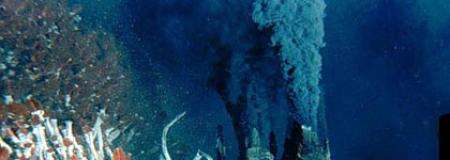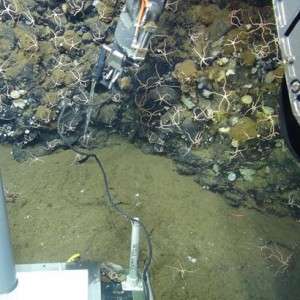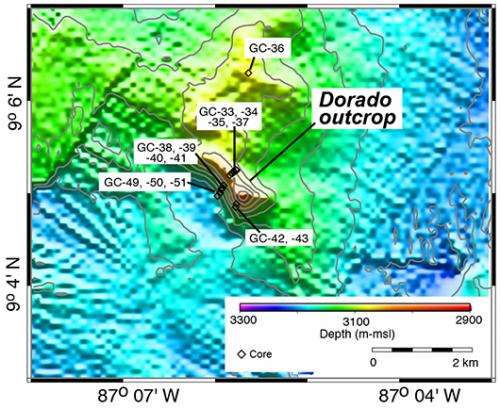December expedition to explore life in hydrothermal vent

While most Americans shop for holiday gifts and break out festive decorations, a team of 18 researchers will spend their holiday season at sea, using underwater robots to explore the extreme habitats of life under the sea crust.
The expedition – funded in part by USC's Center for Dark Energy Biosphere Investigations (C-DEBI) – departs on Dec. 4 and returns on Christmas Eve. Armchair explorers can follow along with their progress via the expedition's blog at http://www.darkenergybiosphere.org/dorado/.
"This is tremendously exciting because the research will help us figure out if most of the water at ocean ridges seeps out slowly or rockets out through vents," said Jan Amend, professor of Earth sciences and biological sciences at USC and director of C-DEBI. Though Amend will not personally be on the cruise, he'll join many scientists awaiting return of samples and data, collected in part by USC Adjunct Assistant Professor Beth Orcutt and USC graduate student Mike Lee.
The expedition team will use two underwater robots – one tethered and one free – to examine an unexplored "fire hose"-like hydrothermal vent at the Dorado outcrop, a protrusion of underwater rock jutting out of the ocean floor off the Pacific coast of Costa Rica.

The goal, according to expedition leader Geoff Wheat of the University of Alaska, Fairbanks, is to sample and better understand one of the most influential environments on Earth: the sea crust.
Wheat's team chose this particular location because of its sea vent, which will be only the second of its type (from a ridge-flank hydrothermal system) ever studied. It expect it to discharges 1,000-10,000 liters of water, producing 200-350 Megawatts of lithospheric heat – equivalent to an entire field of "black-smoker" vents.
"The ocean crust is like a giant filter for the ocean," Wheat said. "the amount of water that flows through ocean crust equals that from all of the rivers on the Earth combined. We need to understand what elements it adds to the water, and what elements it strips away."
Doing so could help scientists assess the crust's potential as a reservoir for carbon sequestration – locking excess carbon dioxide from the atmosphere in the rock beneath the sea.
In addition, the team hopes to learn more about the microbes that inhabit the oxygen-poor depths of the sea crust.

"We're still trying to understand how they manage to survive in such an extreme environment," Amend said. Such research could one day even be used to inform the search for extraterrestrial life. Such life – if it exists – could live in the form of microbes in equally harsh environments on other planets.
The three-week expedition will have researchers working 24-hour days to gather as much data as possible in a short amount of time.
"Few people in the world have the privilege to go to the bottom of the ocean and explore one of the few remaining frontiers on Earth," Wheat said. "We have been envisioning this expedition for nearly a decade."
Provided by Astrobio.net



















